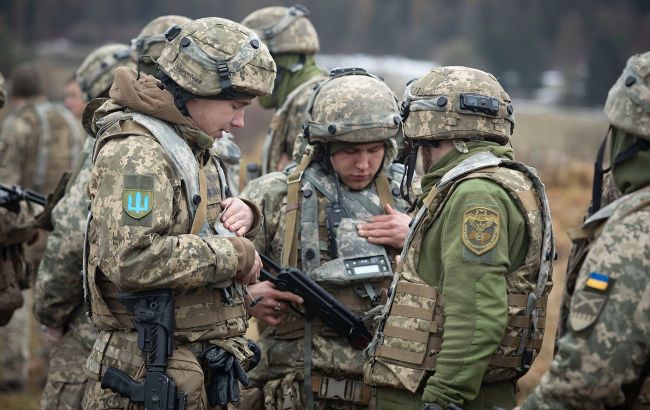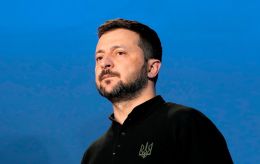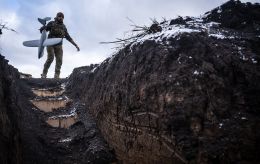ISW reveals where to expect strikes from Russia and what Putin plans
 Russians may be preparing a major offensive in eastern and southern Ukraine (Photo: x.com-generalstaffua)
Russians may be preparing a major offensive in eastern and southern Ukraine (Photo: x.com-generalstaffua)
Russia is launching large-scale attacks on several fronts in Ukraine, attempting to influence ceasefire talks and negotiations. However, analysts do not believe it is capable of achieving significant success, reports the Institute for the Study of War (ISW).
Recently, analysts at the Institute for the Study of War (ISW) have observed an intensification of Russian offensive operations in the Lyman, Pokrovsk, and Orikhiv directions, as well as enemy actions in the northern Sumy region, aiming to push Ukrainian forces out of positions in the Kursk region.
The ISW noted that despite this increased activity, Russian troops have not yet achieved tactically significant successes in these areas, while the Ukrainian Defense Forces continue localized counterattacks in the Pokrovsk and Toretsk directions.
At the same time, Russian forces have advanced by at least three kilometers from the administrative border of the Donetsk and Dnipropetrovsk regions on two sections of the Pokrovsk direction. The Kremlin may use further military advancement in the southeast of the Dnipropetrovsk region to spread chaos and fear in the information space.
Force shortage and political pressure
The ISW believes that the Russian military command is unlikely to redeploy troops from the Kursk region for a potential offensive operation aimed at capturing or advancing toward the city of Sumy. The experts cite a lack of operational-level reserves among the Russians to carry out significant offensive operations against Sumy, Kharkiv, and Zaporizhzhia without redeploying forces already engaged in other sections of the front.
The Institute considers it unlikely that the Russian army will be able to carry out three large-scale offensive operations against the aforementioned major Ukrainian cities, even after such redeployments. The reason for this is the significant losses Russia has suffered in armored vehicles and personnel over the last three years of fighting. Analysts reminded that since the winter of 2022, the Russians have not demonstrated the ability to conduct complex operations with simultaneous offensives on several fronts.
"The Kremlin has thus far appeared unable to generate enough new recruits via ongoing crypto-mobilization efforts to significantly increase the Russian force grouping in Ukraine or Russia's strategic- and operational-level reserves available to enter combat in Ukraine - unless Russian President Vladimir Putin chooses to conduct a deeply unpopular partial reserve call up in the near future, which currently appears unlikely," the report states.
As noted by the ISW, as of the time of the report’s formation, there was no information in open sources regarding significant redeployments of Russian forces in the Sumy, Kharkiv, or Zaporizhzhia directions that would indicate preparations for resuming offensive operations.
At the same time, analysts do not rule out the possibility of a rotation of Russian forces that has not been reported in open sources. Likely, the Russians are trying to advance within artillery range of Sumy, Kharkiv, and Zaporizhzhia in anticipation of a possible ground ceasefire, aiming to disrupt civilian life in these areas or prepare for ground operations before a ceasefire is established.
According to ISW estimates, the Kremlin will likely use any advancement outside the areas currently controlled by Russian forces to gain leverage in future peace negotiations.
"ISW continues to assess that the Kremlin would likely use any gains into oblasts that Russian forces do not current occupy to gain leverage in future peace negotiations and justify future Russian demands for Ukraine to cede additional territory to Russia, including territory that the Kremlin currently does not demand beyond Crimea, Kherson, Zaporizhia, Luhansk, and Donetsk regions," the Institute for the Study of War concluded.
Likely large-scale Russian offensive
According to the Associated Press, citing sources in Ukrainian intelligence, the Russian army is preparing for an offensive operation on an unspecified section of the front in the coming weeks.
As spring approaches, Russia may plan to carry out a multi-purpose offensive along the 1,000-kilometer-long front line, which could last from six to nine months. For this, the Russians may redeploy forces from the Kursk region to other sections of the front, such as the Pokrovsk direction.
The goal of the operation is to intensify pressure on Ukraine and increase Russia's leverage in the ongoing ceasefire negotiations.
President Volodymyr Zelenskyy confirmed this information, specifying that Russia might launch offensives on the Sumy, Kharkiv, and Zaporizhzhia regions.
Currently, the enemy is attempting to breach the state border in the Sumy region, but Ukrainian Defense Forces are successfully destroying the small assault groups.

